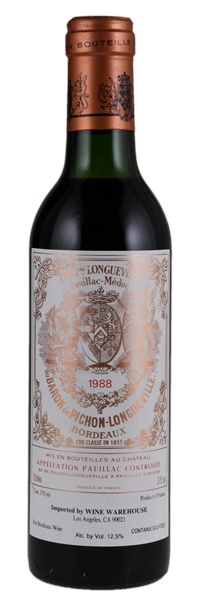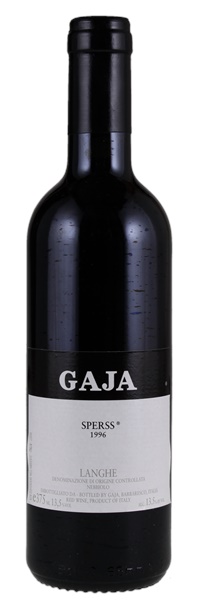Estimate

...has the superb density of material to buffer its powerful acids and tannins. This very backward wine already shows a harmony of components and grip of steel. The finish features palate-drenching tannins and great lively length.
...boasts an opaque ruby/purple color in addition to enormously ripe black cherries, tar, flowers, and white truffles. Extremely full-bodied, with compelling intensity and purity,...
A very ripe red, almost raisiny and curranty. Full-bodied, with chewy tannins and lots of tar and ripe fruit character. Getting better, but still a bit austere. Needs time.--1996 Piedmont retrospective. Best after 2009.

...has the superb density of material to buffer its powerful acids and tannins. This very backward wine already shows a harmony of components and grip of steel. The finish features palate-drenching tannins and great lively length.
...boasts an opaque ruby/purple color in addition to enormously ripe black cherries, tar, flowers, and white truffles. Extremely full-bodied, with compelling intensity and purity,...
A very ripe red, almost raisiny and curranty. Full-bodied, with chewy tannins and lots of tar and ripe fruit character. Getting better, but still a bit austere. Needs time.--1996 Piedmont retrospective. Best after 2009.

...has the superb density of material to buffer its powerful acids and tannins. This very backward wine already shows a harmony of components and grip of steel. The finish features palate-drenching tannins and great lively length.
...boasts an opaque ruby/purple color in addition to enormously ripe black cherries, tar, flowers, and white truffles. Extremely full-bodied, with compelling intensity and purity,...
A very ripe red, almost raisiny and curranty. Full-bodied, with chewy tannins and lots of tar and ripe fruit character. Getting better, but still a bit austere. Needs time.--1996 Piedmont retrospective. Best after 2009.

...has the superb density of material to buffer its powerful acids and tannins. This very backward wine already shows a harmony of components and grip of steel. The finish features palate-drenching tannins and great lively length.
...boasts an opaque ruby/purple color in addition to enormously ripe black cherries, tar, flowers, and white truffles. Extremely full-bodied, with compelling intensity and purity,...
A very ripe red, almost raisiny and curranty. Full-bodied, with chewy tannins and lots of tar and ripe fruit character. Getting better, but still a bit austere. Needs time.--1996 Piedmont retrospective. Best after 2009.

...has the superb density of material to buffer its powerful acids and tannins. This very backward wine already shows a harmony of components and grip of steel. The finish features palate-drenching tannins and great lively length.
...boasts an opaque ruby/purple color in addition to enormously ripe black cherries, tar, flowers, and white truffles. Extremely full-bodied, with compelling intensity and purity,...
A very ripe red, almost raisiny and curranty. Full-bodied, with chewy tannins and lots of tar and ripe fruit character. Getting better, but still a bit austere. Needs time.--1996 Piedmont retrospective. Best after 2009.

...has the superb density of material to buffer its powerful acids and tannins. This very backward wine already shows a harmony of components and grip of steel. The finish features palate-drenching tannins and great lively length.
...boasts an opaque ruby/purple color in addition to enormously ripe black cherries, tar, flowers, and white truffles. Extremely full-bodied, with compelling intensity and purity,...
A very ripe red, almost raisiny and curranty. Full-bodied, with chewy tannins and lots of tar and ripe fruit character. Getting better, but still a bit austere. Needs time.--1996 Piedmont retrospective. Best after 2009.

...has the superb density of material to buffer its powerful acids and tannins. This very backward wine already shows a harmony of components and grip of steel. The finish features palate-drenching tannins and great lively length.
...boasts an opaque ruby/purple color in addition to enormously ripe black cherries, tar, flowers, and white truffles. Extremely full-bodied, with compelling intensity and purity,...
A very ripe red, almost raisiny and curranty. Full-bodied, with chewy tannins and lots of tar and ripe fruit character. Getting better, but still a bit austere. Needs time.--1996 Piedmont retrospective. Best after 2009.